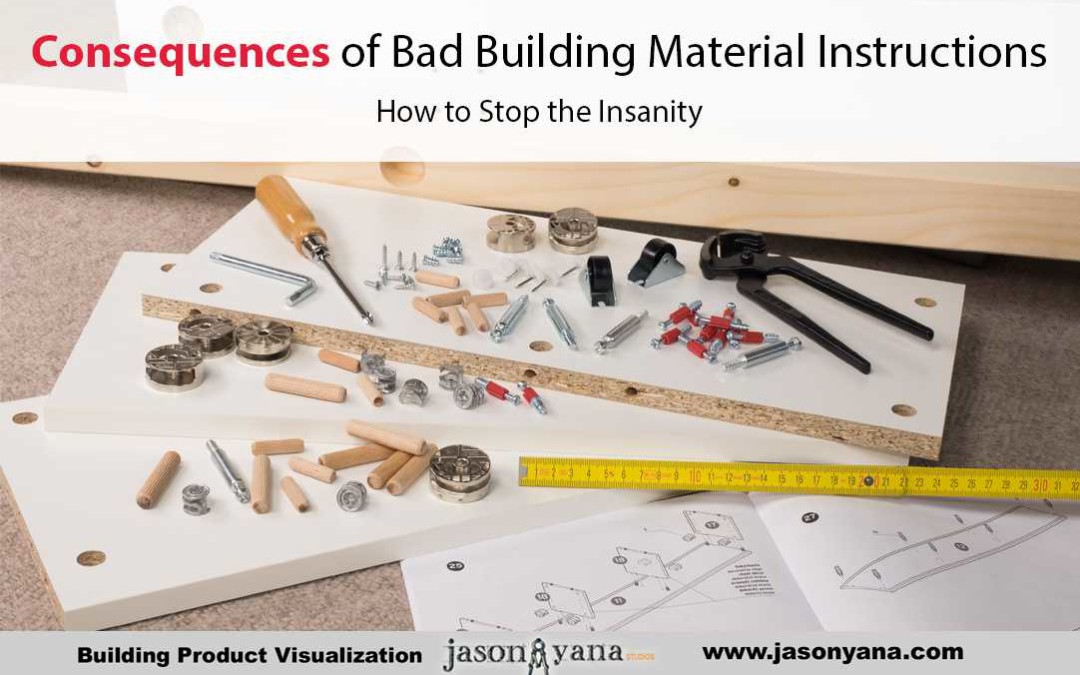Everyone Has a Story About Frustrating Installation Instructions
Let’s be honest, sometimes we just like to vent our frustrations in conversation. The next time you are stuck and not sure what to say to someone, ask them to tell you a story about a time where they were completely driven insane by poorly written installation instructions.
People of all nations, from all walks of life, at one point, have wanted to find the fella who wrote that instruction manual and torture him endlessly.
Poor instructions (e.g. too long, too short, skipping steps, making major assumptions about the reason for the fix, etc.) plague the market and plague the consumer. Sometimes, your customer might even decide to forego your product entirely, if your installation instructions are badly presented, or worse if they don’t even exist.
We all know what happens when instructions are lacking, but that does not stop companies from doing it. I relate to you an example of frustrating, badly presented installation instructions for replacing the mechanism that locks and unlocks the trunk of a hatchback.
Here is One Such Story, Feel my Pain
I closed the hatchback of my car one day and lo and behold it refused to open the next time I attempted to unlock it. I tried an endless number of troubleshooting tips, but nothing worked. Finally, I came to the conclusion that it needed a new trunk mechanism. I ordered one; it arrived; I was set to go.
The most important step to do in an instruction manual really is the most important step to cover. And in this experience, my troubles began early. As I mentioned above, my trunk would NOT open. But the instruction manual (as well as every online forum I accessed) ASSUMED that the trunk would not close. And thus “Step 1” simply stated: “Stand at the back of the car. Pop open the cover inside the trunk to access the mechanism.”
There was just one small problem, the cover is impossible to access when the trunk is closed. But the instructions said to simply pop it off! It is irritating when a company assumes that only the easiest thing is wrong. What good are the instructions then? I searched and searched online for the instructions for my problem. But apparently, no one else’s trunk breaks closed, just open.
The steps I needed to do no longer correlated with the “instructions” I had. I began to invent my own. This is another negative result of poor instructions: the consumer has to make it up as they go along. I put the back seat down and crawled into the car to get to the trunk area. To give you a visual, the car is a Mini Cooper. I had to work on my side, stretched out, using one arm, a flashlight that was precariously balanced, and no real idea how to open a cover that was supposed to be opened when standing outside the car—when the trunk was open.
I had to work on my side, stretched out, using one arm, a flashlight that was precariously balanced, and no real idea how to open a cover that was supposed to be opened when standing outside the car—when the trunk was open.
I eventually popped/yanked (same difference :)) open the cover and accessed the mechanism. Next problem: the trunk wouldn’t open save for a few inches because HELLO, it was broken in the locked position—not the open position.
At this point, I just wanted the darn trunk to be open! So I did what any self-respecting, irritated, bad instruction manual follower would do: I bent, banged, twisted…then bent, and banged some more until it was a mangled piece of metal. I didn’t care because I had a new one to put on. After approximately five hours, the trunk was open! I attached the new mechanism and voila, the trunk closed like gangbusters—no thanks to lousy instructions.
When a company neglects to consider all of the reasons a repair or part change might be needed, consumers feel insulted. What makes instructions good in the first place is the degree to which they communicate what is happening in the real world.
The entire process is all connected. If I had had some better instructions, I would have saved myself some hassle. Better yet, if I had been able to view a more detailed rendering of what this process looked like from my angle, the process would have gone much more smoothly. My request is not lofty. It is unlikely that I am the only one whose trunk would mysteriously break from apparently the “wrong” side.
Building Material Install Instructions are Difficult
Installation instructions for building materials can be even more frustrating than my trunk latch. Chances are some quick conversations with your sales and support staff and some calls to your best customers will result in a nice list of common mistakes people make installing your products.
What if there was a great animated installation video you could have shown them that would have prevented all of those problems?
Would they be more likely to become a repeat customer?
Will you spend less time doing damage control and taking tech calls?
Would your brand image and recognition be elevated?
i think the answer is yes!
Regards,
Jason Yana
About the Author :
Jason Yana has 2 decades of experience in architectural technology, 3d graphics and construction marketing. This unique combination provides highly-effective visual representations of building products that fuel marketing and support efforts.
His award-winning body of work informs, inspires and educates building product customers.

